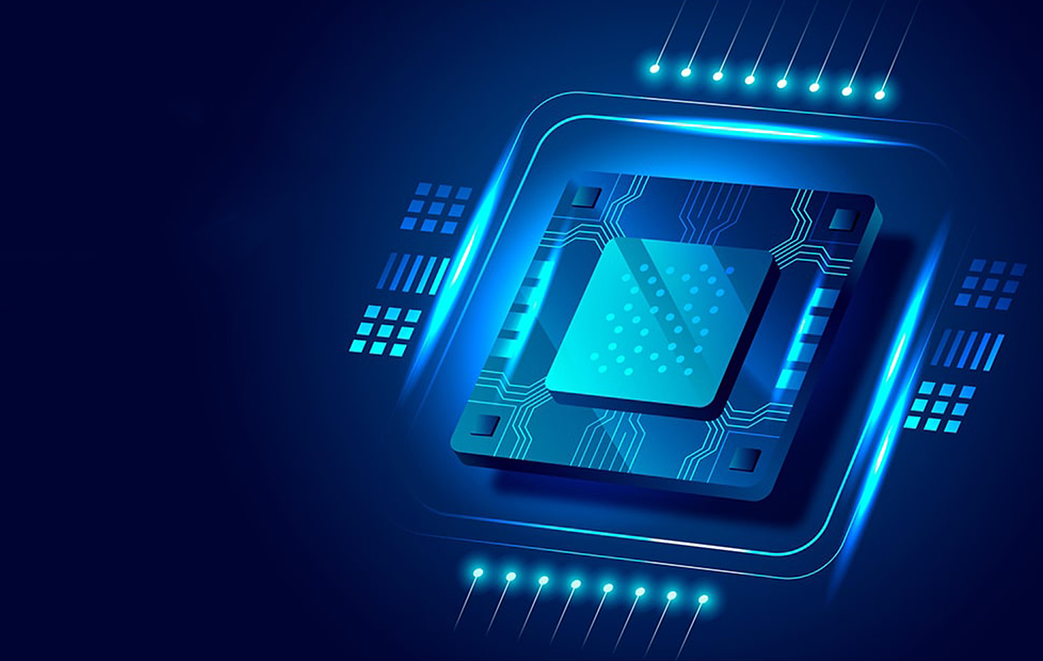
The manufacturing of microchips, such as GPUs (Graphics Processing Units) and CPUs (Central Processing Units), is a fundamental pillar of modern technology. These components power everything from everyday consumer electronics to cutting-edge AI systems and data centers. As the demand for increasingly powerful and energy-efficient microchips grows, industrial automation has become essential in semiconductor manufacturing. This article explores how automation, particularly the use of servo controllers, is transforming the microchip production process, boosting precision, efficiency, and yield in one of the most complex manufacturing industries.
The Complexities of Microchip Manufacturing
Microchip manufacturing, or semiconductor fabrication, involves the creation of integrated circuits (commonly known as chips) that are used in electronic devices. The process is extraordinarily complex, requiring the creation of multiple layers of materials at a microscopic scale through processes like photolithography, etching, and chemical vapor deposition. Precision and control are paramount, as the smallest error can result in the scrapping of entire batches of chips.
Role of Industrial Automation in Microchip Manufacturing
Automation in microchip manufacturing is not new, but its role has evolved significantly with advancements in technology. Here’s how industrial automation is being applied in this high-tech field:
-
Photolithography
Photolithography is a critical step in chip manufacturing where patterns are transferred onto the silicon wafer. This process requires extremely precise movements and alignments, often at sub-nanometer scales. Servo controllers are extensively used here to manage the position and speed of the photolithographic equipment, ensuring that each layer of the chip is perfectly aligned with the previous one.
-
Wafer Handling and Transport
Automated systems handle the transport and positioning of silicon wafers throughout the fabrication facility. Servo controllers like the DKC02.1-040-7-FW ensure smooth and precise movements within these systems, minimizing the risk of damage to the delicate wafers and speeding up the overall process.
-
Deposition and Etching
The deposition of various materials onto the wafer and the subsequent etching processes are highly automated to ensure consistency and precision. Servo controllers play a critical role in these machines, precisely controlling the rate and position of material deposition and the etching tools to ensure uniformity across the entire wafer.
-
Inspection and Quality Control
Given the microscopic scale of the structures on a microchip, automated inspection systems are crucial. These systems use high-resolution cameras and other sensors to detect any defects. Servo controllers are used to precisely move the inspection equipment or the wafer itself, allowing for detailed and systematic scanning of every chip on the wafer.
Benefits of Automation in Microchip Manufacturing
Increased Precision and Consistency
- Automation provides a level of precision that is simply unattainable with human hands. This is crucial in an industry where structures are measured in nanometers, and any inconsistency can affect the performance of the chip.
Enhanced Production Speed and Volume
- Automated systems can operate 24/7, significantly increasing the production volume and speed compared to manual operations. This is essential to meet the global demand for microchips, which is perpetually rising.
Improved Yield and Reduced Waste
- Automation reduces the occurrence of human error and the variability associated with manual processes, thereby improving the yield—i.e., the percentage of good chips in each wafer—and reducing waste.
Scalability
- As product designs evolve, automated systems can be reprogrammed and adjusted to handle new specifications and scales, allowing manufacturers to adapt to new technologies without needing to completely overhaul their facilities.
Challenges and Considerations
Despite the numerous advantages, automating microchip manufacturing presents several challenges:
High Capital Investment
- The initial investment in high-precision automation technologies, including advanced servo controllers and robotic systems, is substantial. However, the long-term benefits often justify these costs.
Complexity of Integration
- Integrating various automated systems into a seamless production line requires significant expertise in both engineering and software development.
Maintenance and Upkeep
- Advanced automated systems require regular maintenance by highly skilled technicians to ensure they continue to operate at peak efficiency.
The Future of Automation in Microchip Manufacturing
Looking ahead, the trend towards greater automation in microchip manufacturing is set to continue. Innovations in machine learning and artificial intelligence are expected to play a larger role, potentially leading to even more autonomous manufacturing environments. These systems could predict maintenance needs, adapt to variations in material quality, and optimize production processes in real-time, further enhancing efficiency and reducing costs.
Conclusion
Industrial automation, particularly the use of servo controllers, has transformed microchip manufacturing into a highly efficient, precise, and scalable process. As technology continues to advance, the integration of more sophisticated automation solutions will likely drive further improvements in this critical sector. This ongoing evolution is essential not only for meeting the current demands for more powerful microchips but also for paving the way for future innovations in technology and electronics.
